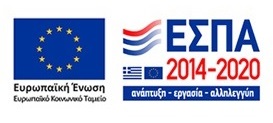
The present research project is focused on the development of iron oxide nanoparticles (IONPs) radiolabeled with 68Ga, for dual-modality molecular imaging of prostate cancer with PET/MRI. These NPs are functionalized with adequate pharmacophores (peptides or peptidomimetic molecules) so as to target: i) Bombesin (BN) receptors, otherwise known as Gastrin Releasing Peptide Receptors, GRPrs, and/or ii) Prostate Membrane Specific Antigen, PSMA. Both BN receptors and PSMA are overexpressed on prostate cancer cells. Furthermore, these NPs are functionalized with chelators, for their radiolabeling with 68Ga, which in combination with their iron oxide composition, are expected to lead to a diagnostic entity with a dual-modality PET/MRI potential.
One of the most important characteristics of tumors is their heterogeneity. Prostate cancer tumors often present areas on the tumor which are histopathologically negative for GRPRs or PSMA mentioned above. Such cases of heterogeneity may lead to problems during their imaging, when radiopharmaceuticals targeting only one of the two receptors are used. The combination of 2 pharmacophores on a single dimeric compound overcomes the aforementioned problem and proves to be advantageous when compared to diagnostic procedures which utilize monomers targeting only one of the two receptors.
In recent years there has been an increase in scientific interest regarding combined imaging techniques such as PET/MRI. The combination of the characteristics of each technique leads to synergistic advantages in terms of their diagnostic ability, e.g. PET/MRI combines the high sensitivity of PET with the high-resolution anatomical information of MRI. Therefore, the creation of imaging agents that can take advantage of both detectors is an urgent need.
The NPs of the present proposal, due to their ferromagnetic nature, can be detected by MRI, while also having suitable chelating agents on their surface to interact with the 68Ga radionuclide. 68Ga is a short-lived radionuclide (t1/2 = 68 min) which decays by emitting positrons (β+, 88%, 511 KeV) ideal for PET molecular imaging applications. In addition, it is produced by commercially available 68Ge/68Ga generators, a possibility with prospects of wide application in clinical practice in diagnostic centers with PET cameras (equivalent to 99mTc for SPECT).
